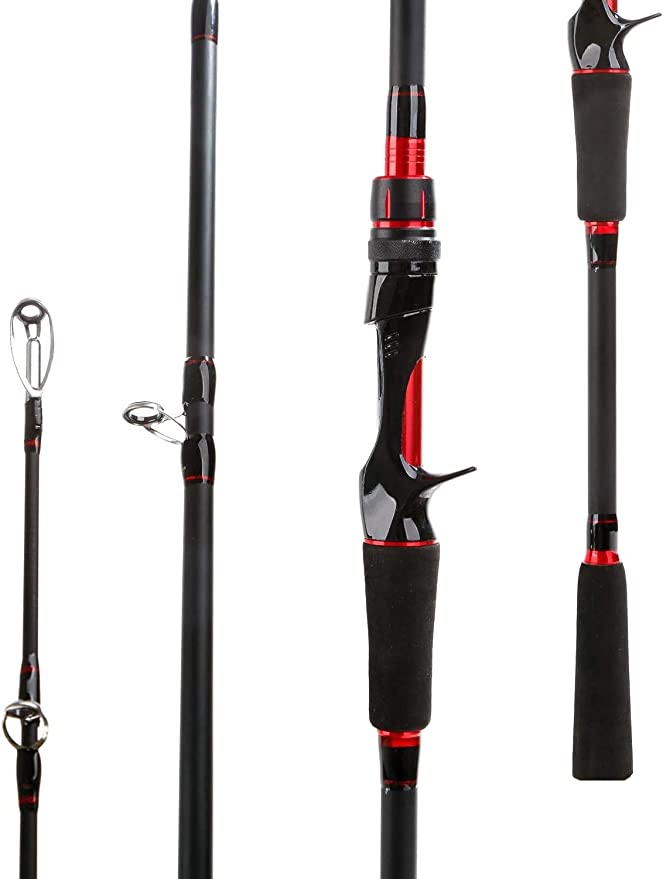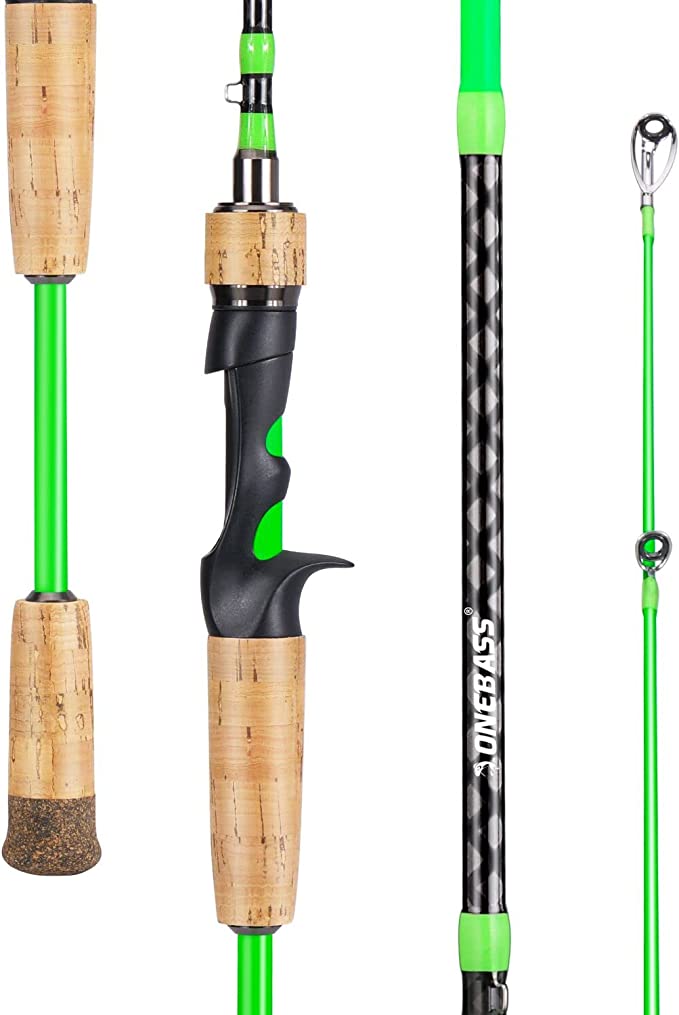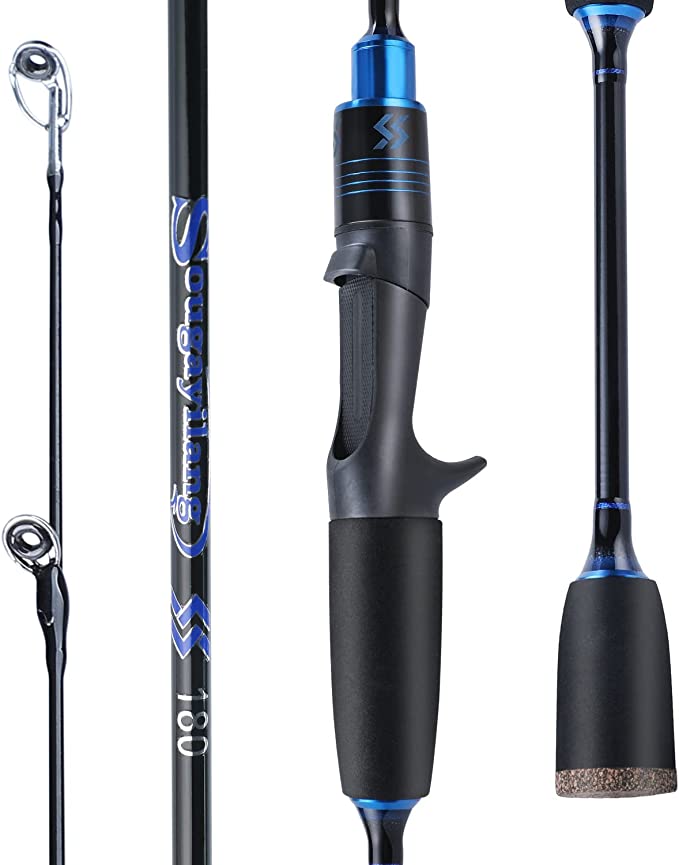The Angler's Sixth Sense: Deconstructing the Science of a Modern Fishing Rod
Update on Aug. 1, 2025, 10:24 a.m.
There is a moment, familiar to every angler, that borders on the magical. It’s a feeling transmitted from a world unseen; a subtle tap, a gentle drag, a faint vibration that travels from the depths, up the line, and announces itself as a crisp, electric signal in the palm of your hand. We call it “the bite,” but it’s really a conversation. And the quality of that conversation depends entirely on the instrument we use to listen. A modern fishing rod, like the KastKing Royale Charge, isn’t merely a stick for dangling a line; it’s a finely tuned scientific instrument, designed to translate the silent language of the water.
To understand how it achieves this, we must look past the vibrant colors and sleek finish, and delve into the material science and physics that give the rod its soul. It’s a journey that reveals how a delicate balance of stiffness, smoothness, and geometry creates the trifecta every angler craves: sensitivity, lightness, and power.
The Soul of Sensitivity: Decoding the Graphite Blank
The heart of any modern rod is the blank—the tapered tube that forms its backbone. The Royale Charge is built on a KastFlex IM6 Graphite blank. While “graphite” or “carbon fiber” are common terms, the “IM6” designation is key. “IM” stands for Intermediate Modulus, a scientific measure of a material’s stiffness or resistance to bending.
Think of it this way: imagine sending a signal down a long, loose rope. A flick of your wrist results in a slow, weak wave at the other end. Now, imagine that rope is a taut steel wire. The same flick produces a sharp, instantaneous vibration. This is the principle of modulus at work. The higher a material’s modulus, the more efficiently and rapidly it transmits energy. The high-carbon, intermediate modulus structure of an IM6 Graphite blank acts like that steel wire. The faintest nibble from a perch sends a high-frequency vibration up the line, and the stiff blank transmits this signal to your hand with minimal loss of energy, or damping. This is the very physics of sensitivity.
Yet, this same stiffness is also the source of the rod’s power. According to Hooke’s Law of elasticity, the force required to deform an object is proportional to its stiffness. When you rear back to set the hook, the blank’s resistance to bending loads it with potential energy. The moment it’s released, that stored energy is transferred directly to the line, driving the hook home with decisive force. The genius of the design lies in achieving this power without excessive weight, a hallmark of carbon fiber composites.
The Silent Highway: Engineering the Perfect Line Guides
If the blank is the rod’s central nervous system, the line guides are its high-speed data cables. The move towards modern, braided “super lines” presented a significant engineering challenge. These lines, while incredibly strong, are also highly abrasive and act like microscopic saws on softer materials. This is why the choice of guide material is critical. The Royale Charge uses durable Titanium Oxide rings, a type of advanced ceramic.
Ceramics are defined by their incredible hardness and chemical inertness. Titanium Oxide boasts a high rating on the Mohs scale of hardness, making it exceptionally resistant to the grooving and wear caused by braided line. This ensures the guide remains perfectly smooth over thousands of casts. But hardness is only half the story. The other crucial factor is the coefficient of friction. The ultra-smooth surface of polished titanium oxide creates a near-frictionless path for the line. During a cast, this means the line flows off the spool and through the guides with minimal resistance, maximizing casting distance and accuracy. It turns the series of guides into a silent, efficient highway for your line, rather than a bumpy, energy-sapping gravel road.
The Physics of the Fight: Action, Power, and Human Connection
A rod’s “action” describes where it bends under load. The Royale Charge series features models with a “Fast Action,” meaning the bend is concentrated in the upper third of the rod. This design is a masterclass in applied physics. By keeping the lower two-thirds of the rod relatively stiff, it creates a powerful lever. When you detect a bite and snap your wrist, the force travels down a shorter, more responsive section, resulting in a quicker and more powerful hookset. The rod’s tip acts as a sensitive shock absorber, protecting light lines, while the powerful butt section provides the backbone needed to control a fighting fish.
Even the convenience of a two-piece design is a feat of engineering. The critical challenge is the ferrule—the joint where the two pieces connect. A poorly designed ferrule creates a “flat spot” in the rod’s arc, disrupting its action and creating a point of stress concentration. Modern designs, however, use precision-tapered joints that allow the two halves to meld into a single, continuous curve, preserving the rod’s intended action and strength as if it were a single piece.
The final point of contact, the high-density EVA handles, completes this scientific symphony. Ethylene Vinyl Acetate is a closed-cell foam polymer prized for its lightness, durability, and apathetic relationship with water. Its density is crucial; it’s firm enough to transmit the last of the blank’s subtle vibrations directly to your hand, acting as the final sensor in the chain, while still being comfortable enough to grip for hours without fatigue.
Ultimately, the rod in your hand is far more than the sum of its parts. It is a carefully orchestrated system where material science provides the potential, and physics dictates the performance. From the molecular structure of its carbon blank to the engineered smoothness of its guides, every element is designed to enhance and extend the angler’s own senses, turning a simple tool into a true medium for experiencing the underwater world.







































